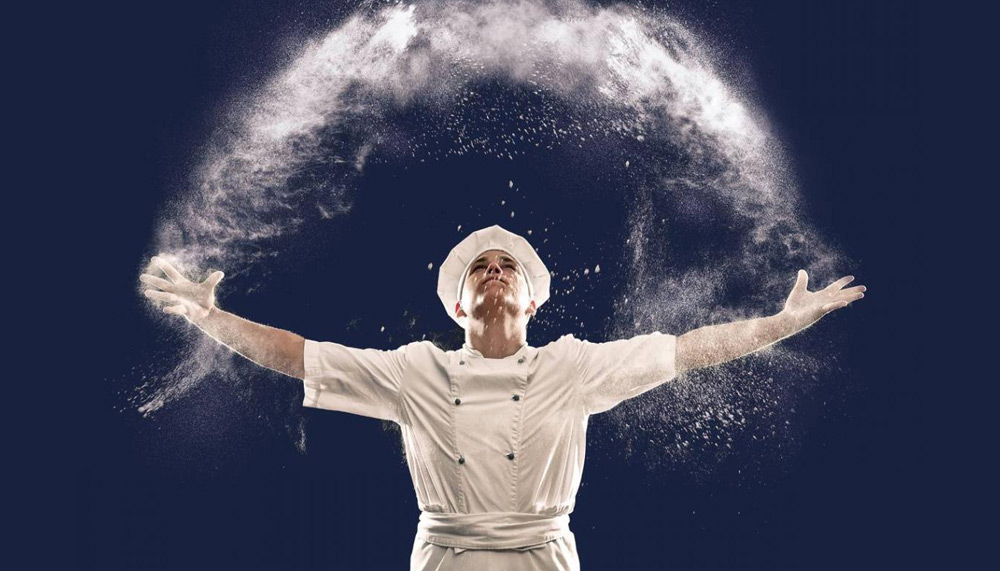The celeb-savvy cook succeeds French culinary royalty Alain Ducasse—and he’s putting on quite the show
For three months last winter, chef Jean Imbert retreated to his cabin in Brittany to re-read the great classics of French gastronomy that he had studied early in his career. He pored over L’art de la Cuisine Française by Marie-Antoine Carême, the 19th-century chef who cooked for Napoleon I and dazzled the Paris elite with his towering dessert centrepieces, and Le Guide Culinaire by Auguste Escoffier, famous for codifying the kitchen brigade system.
But he also studied the contemporary recipes of chef Guillaume Gomez, who cooked for four presidents as the executive chef of the Élysée in France before being appointed an ambassador of gastronomy by President Emmanuel Macron last year. Imbert’s goal was straightforward, though hardly simple: “I wanted to understand, at a deeper level, what French cuisine is,” he says. “I tried to use this as a starting point for my reflection.”
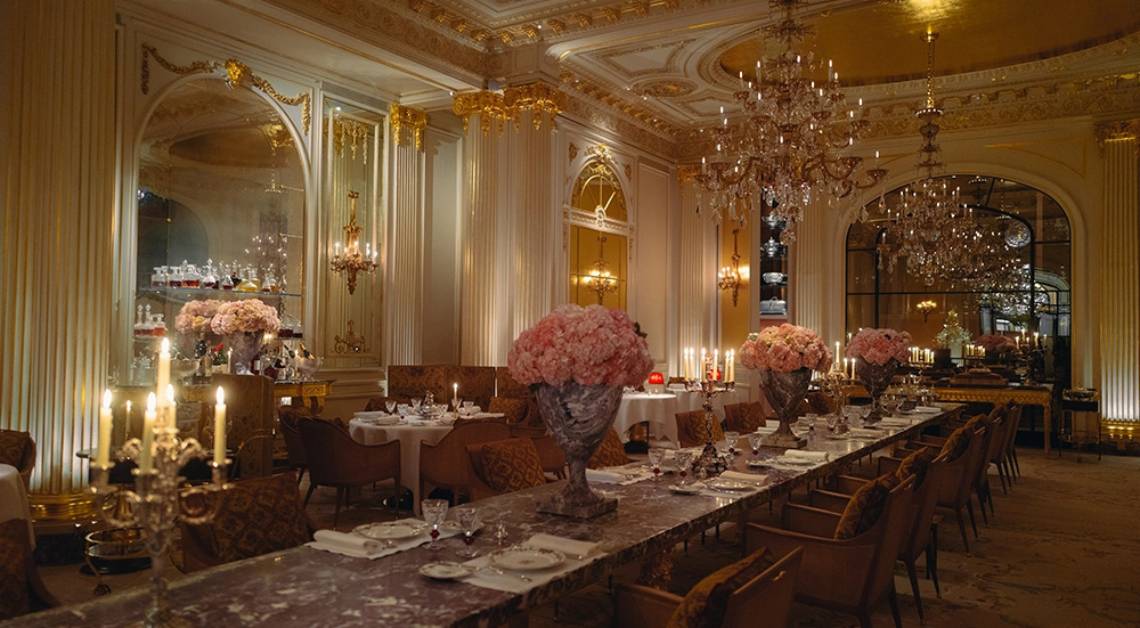
The result is his newest gastronomic destination, Jean Imbert au Plaza Athénée, which ushered in a new chapter for the storied five-star hotel, in Paris’s majestically chic 8th arrondissement, when it opened in January. Sparkling crystal chandeliers hang from a gilded ceiling, softly illuminating the 20,000 gold leaves bedecking the dining room walls and enveloping the space in an amber-hued, candlelit glow. Cutting through the centre of the room, a 12-metre-long Breccia-marble table evokes the long banquets found in the royal court of Louis XIV; large vases made from the same hold towering domes of delicate pink hydrangea.
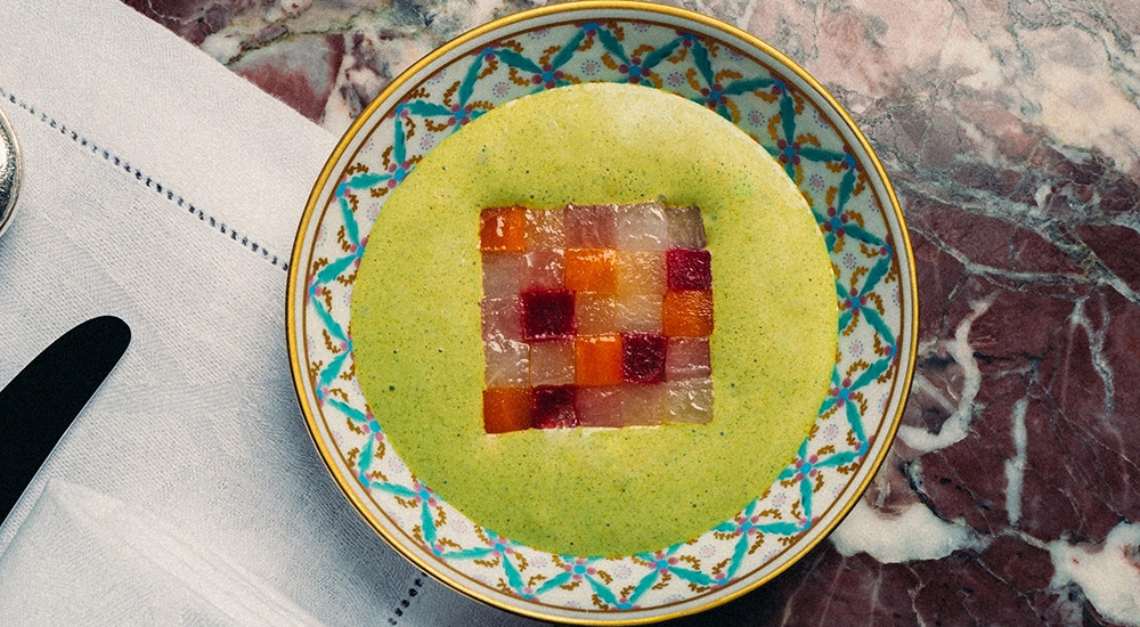
Such opulence is a major departure from the restaurant’s former life under legendary chef Alain Ducasse—the previous decor was modern and monochrome, identifiable by its signature steel cloche banquettes—who handed over the proverbial keys to Imbert last spring after 21 years of steering the flagship restaurant. Some critics blasted the decision to replace the titan of French gastronomy with the 40-year-old Imbert as a political appointment meant to tap his online popularity and celebrity friends: Imbert holds no Michelin stars but has 453,000 Instagram followers, and his feed is filled with snaps of him posing with A-listers including Dua Lipa, Matt Damon, Madonna, Jay-Z, Beyoncé, Lenny Kravitz and Pharrell Williams, with whom he opened Swan, in Miami, and ToShare, in Saint-Tropez and Ibiza.
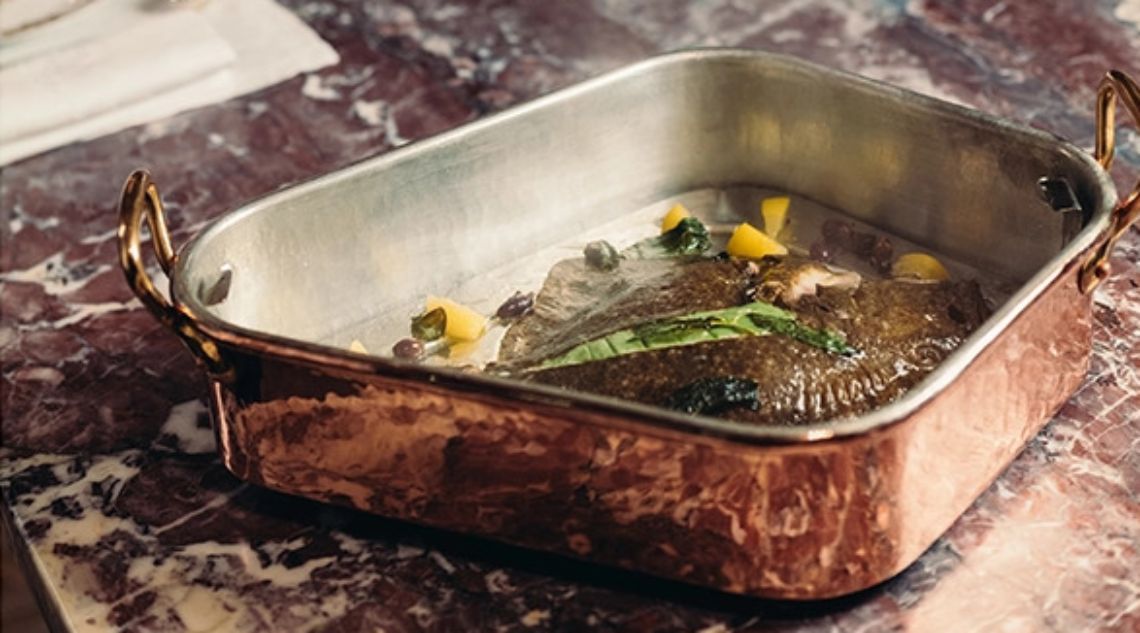
And yet Imbert’s dishes, some of which are based on recipes going back centuries, add an undeniable element of theatre. Turbot stuffed with watercress arrives whole, filleted by servers tableside. The vol-au-vent is served deconstructed, a naked plate of quenelles, sweetbreads and truffles until the server ceremoniously tops it with a buckwheat puff pastry sheet and long drizzles of accompanying sauces. After eight years of Ducasse’s Naturalité concept, which banned meat in favour of healthier fish, vegetables and grains, Imbert is clearly not counting calories (and has reintroduced meat to the menu).
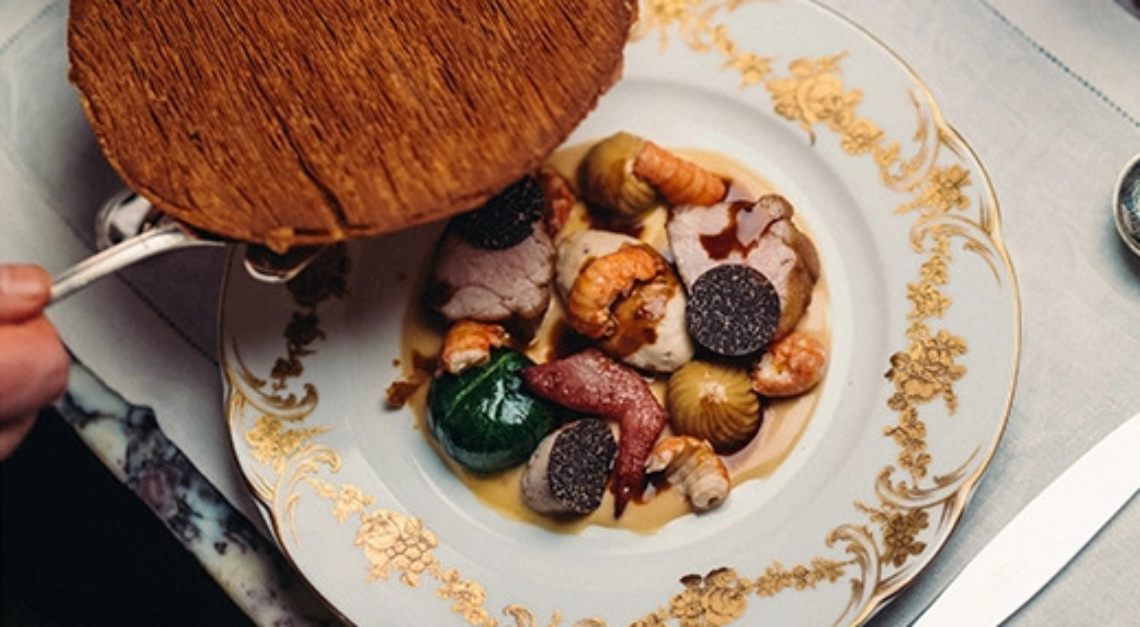
But all that pales in comparison to the end of the meal. To signal the beginning of dessert service, the restaurant director rings a bell to command everyone’s attention. The lights dim and a screen at the front of the room opens to reveal a row of pastry chefs, who put the finishing touches on the desserts before serving guests.
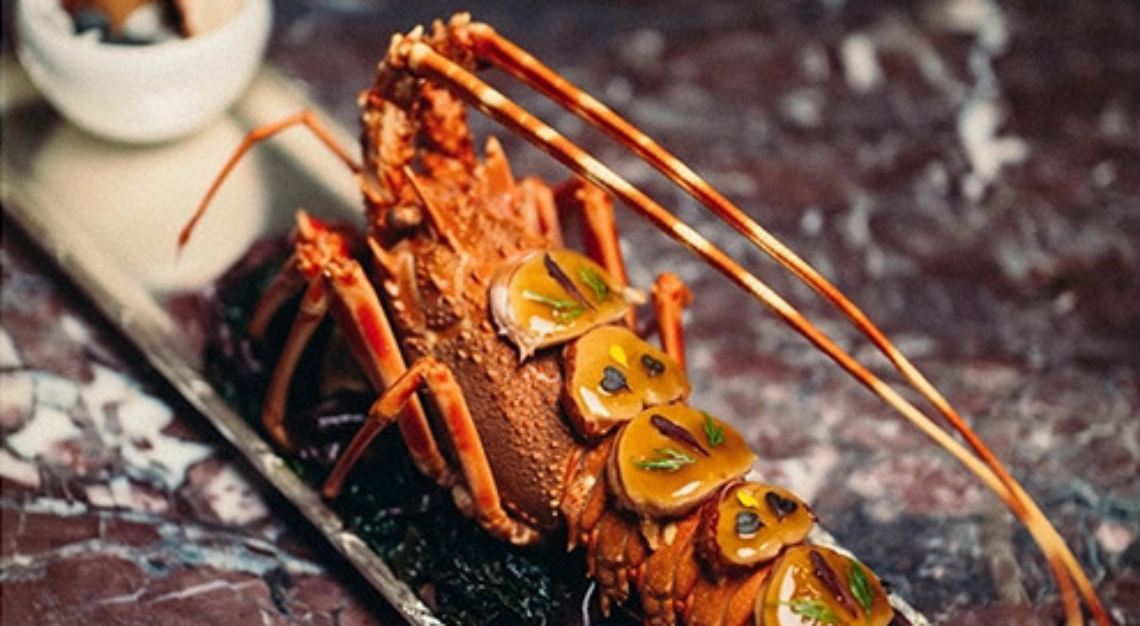
“For me, at this historic palace in the heart of Paris, on Avenue Montaigne, I always had the idea of telling the story of French history and French heritage,” Imbert says, evoking the idea of “planetary alignment” in all his projects. But his true guiding force may be closer to home: his grandmother, Nicole, whom Imbert has often cited as an inspiration throughout his career. Four years ago, he booked the Plaza, still under Ducasse, to fête her 90th birthday along with 30 members of their family; with her passing last year, Imbert won’t have the chance to reimagine a birthday celebration for “Mamie,” as he calls her, with the same restaurant now under his command.
“She wasn’t there when I took over the Plaza Athénée, but the first symbol I thought of was her and the party we had here with my entire family,” he says. “I like symbols and meaning in things. So this made me happy.”
This story was first published on Robb Report USA






